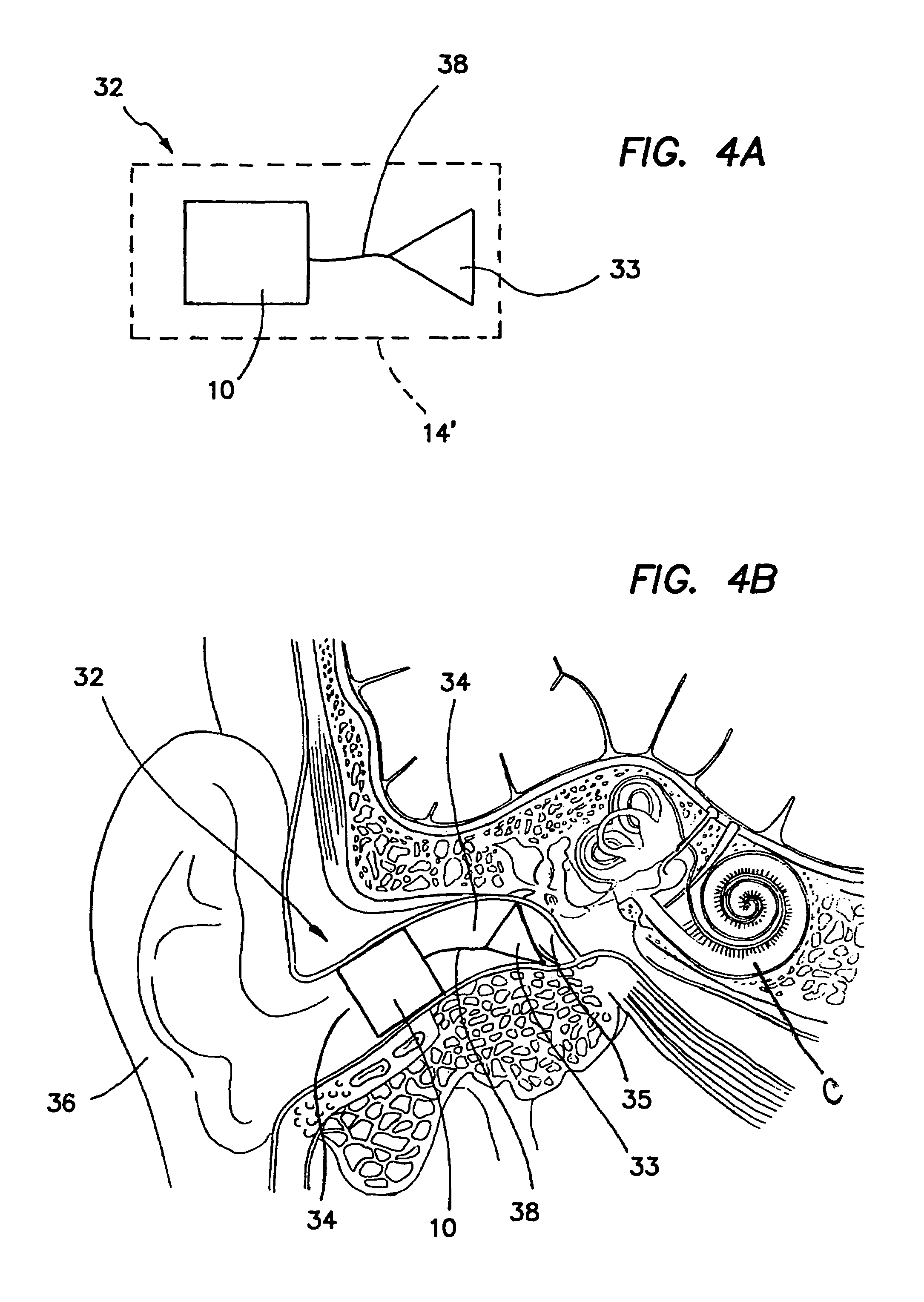Optical waveguide vibration sensor for use in hearing aid
a vibration sensor and waveguide technology, applied in the field of optical waveguide vibration sensor for use in hearing aids, can solve the problems of large power consumption of devices, large battery packs and body-worn accessories, and ineffective hearing aids for people with severe or profound sensori-neural hearing loss
- Summary
- Abstract
- Description
- Claims
- Application Information
AI Technical Summary
Benefits of technology
Problems solved by technology
Method used
Image
Examples
Embodiment Construction
[0039]The following detailed description and the accompanying drawings are provided for purposes of describing and illustrating the presently preferred embodiments of the invention only, and are not intended to limit the scope of the invention in any way.
DETAILED DESCRIPTION AND EXAMPLES
[0040]FIG. 1 illustrates a hearing enhancement device 10 incorporating a vibration detector / transducer 12 according to the present invention. The vibration detector / transducer 12 is a micro-electrical-mechanical system (MEMS) encased in a device housing 14 (shown here in phantom), which includes an opening 15 for allowing sound to reach the MEMS. The device housing 14 is coupled at one end to a battery housing 16 containing a battery for powering the vibration detector / transducer 12 and at the opposite end to an adapter or end cap 18 configured to facilitate physical interface between the vibration detector / transducer 12 and the inner ear of a hearing-impaired patient.
[0041]Turning now to FIGS. 2 and...
PUM
| Property | Measurement | Unit |
|---|---|---|
| Young's Modulus | aaaaa | aaaaa |
| power | aaaaa | aaaaa |
| frequency selectivity | aaaaa | aaaaa |
Abstract
Description
Claims
Application Information
 Login to View More
Login to View More - R&D
- Intellectual Property
- Life Sciences
- Materials
- Tech Scout
- Unparalleled Data Quality
- Higher Quality Content
- 60% Fewer Hallucinations
Browse by: Latest US Patents, China's latest patents, Technical Efficacy Thesaurus, Application Domain, Technology Topic, Popular Technical Reports.
© 2025 PatSnap. All rights reserved.Legal|Privacy policy|Modern Slavery Act Transparency Statement|Sitemap|About US| Contact US: help@patsnap.com



